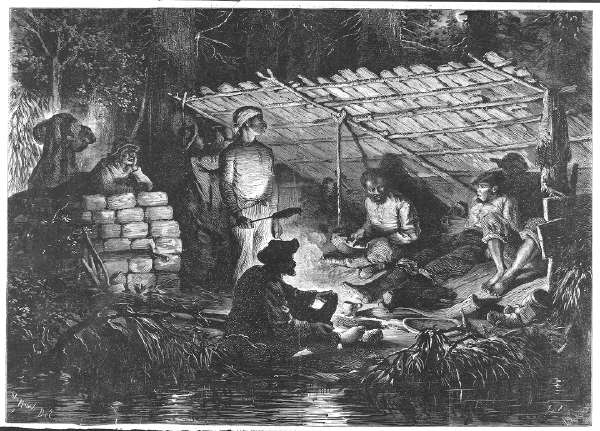|
Group (Fugitive Slaves?) in Lean-To On River Bank, Illuminated By Firelight; From Harper's Weekly Digital History ID 2387

Credit: Schomburg Center for Research in Black Culture, Photographs and Prints Division
Media type: engraving
Museum Number:
Annotation: With the rise in the number of runaway slaves and the growing size of the Underground Railroad, which offered aid and passage for enslaved Africans to escape the south, came institution of the Fugitive Slave Act of 1850. Designed to aid slave owners in re-capturing their “lost property”, and pushed through legislature as a gesture to southerners who had allowed the introduction of California to the Union as a “free” state, the Fugitive Slave Act greatly increased the authority under which federal commissioners could pursue runaway slaves in any state of the union. The Fugitive Slave Acts provided no statute of limitations, and it was not uncommon for slaves who had been free for years to be returned to bondage. Commissioners were granted federal authority to compel citizens to aid them in capturing fugitive slaves and to impose fines and imprison those who refused to comply. All of this, combined the fact that commissioners were paid whether the captured slave was actually proven to be the property of the original owner or a case of mistaken identity, caused the Fugitive Slave Act to encounter a great deal of opposition in the North. The resentment fostered by the Fugitive Slave Act coalesced into public action, including a rise in the activity of the Underground Railroad and the popularity of variety abolitionist material, including Harriet Beecher Stowe’s Uncle Tom’s Cabin, which was published in 1852.
Year: 1860
Copyright 2021 Digital History
|
